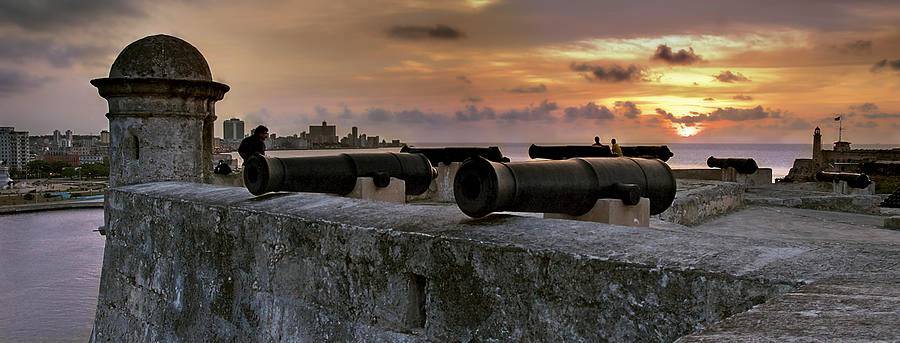Architectural fortress and cultural headquarters of Cuba: Morro-Cabaña Military Historical Park
It is attractive to visit the places that marked history in the City of Havana. One of them is the Morro-Cabaña Military Historical Park, on the east coast, at the entrance to the bay, a building considered among the most spectacular in the Caribbean.
This complex joins the castle-fortress of the Tres Reyes del Morro and the San Carlos de la Cabaña fortress. In the 16th century, the protection of the city was foreseen on the Island, so in 1538 the second fortress in America was built, named Castillo de la Real Fuerza. Years later, El Morro and La Punta would be built.
Its purpose at that stage was absolutely defensive, against pirates, corsairs and declared enemy powers, but today it is a unique museum where a wide and rich collection of ancient weapons is collected; also, home to important cultural events.
In 1763 the English managed to take the almost impregnable Morro fortress, as they settled without difficulties on the hill where La Cabaña would later be built. This served as a privileged position for his artillery in the invasion. After this experience, under the guidance of Brigadier Don Silvestre Abarca, the construction of La Fortaleza de La Cabaña would begin on the high coast. The works ended in 1774.
From this site, daily, we can hear the famousCannon shot at 9 o’clock in Havana. Thus the closing of the city gates was marked. Museum hours are between 9 a.m. and 9 p.m., so if you are close you should not miss the opportunity to hear the sound of the shot up close. Year after year, this complex opens its doors to the most important cultural events in the country, among which is the International Book Fair. Reason why thousands of visitors come to the Island.
For its part, El Castillo de los Tres Reyes Magos del Morro, another of the most important buildings in the Military Park, has become a symbol of the city, along with the Capitol and the Giraldilla. It was drawn up by the engineer Juan Bautista Antonelli in 1585. It had a strategic position, an aspect that would become much more relevant when the port of Havana began to acquire the importance it had in the colony. During the taking of Havana by the English it was considerably damaged, but a year later it was rebuilt under the direction of the engineers Silvestre Abarca and Agustín Crame.
El Castillo del Morro, since the 90s has kept its rooms functioning as a gallery and in its spaces a lively cultural life does not cease. This can also be a good excuse to enjoy two of the best restaurants in Havana: Los Doce Apóstoles and La Divina Pastora, as well as a bar with extraordinary views of the Havana coastline.
From La Cabaña you can see the Morro fortress like an irregular polygon like a rising cliff.
The height is over 60 feet for many parts and everything is rough rock. It is projected into the sea and exhibits a half bastion on which a tower with a lighthouse rises. This is the image that I would keep in my memory.


Comment (0)